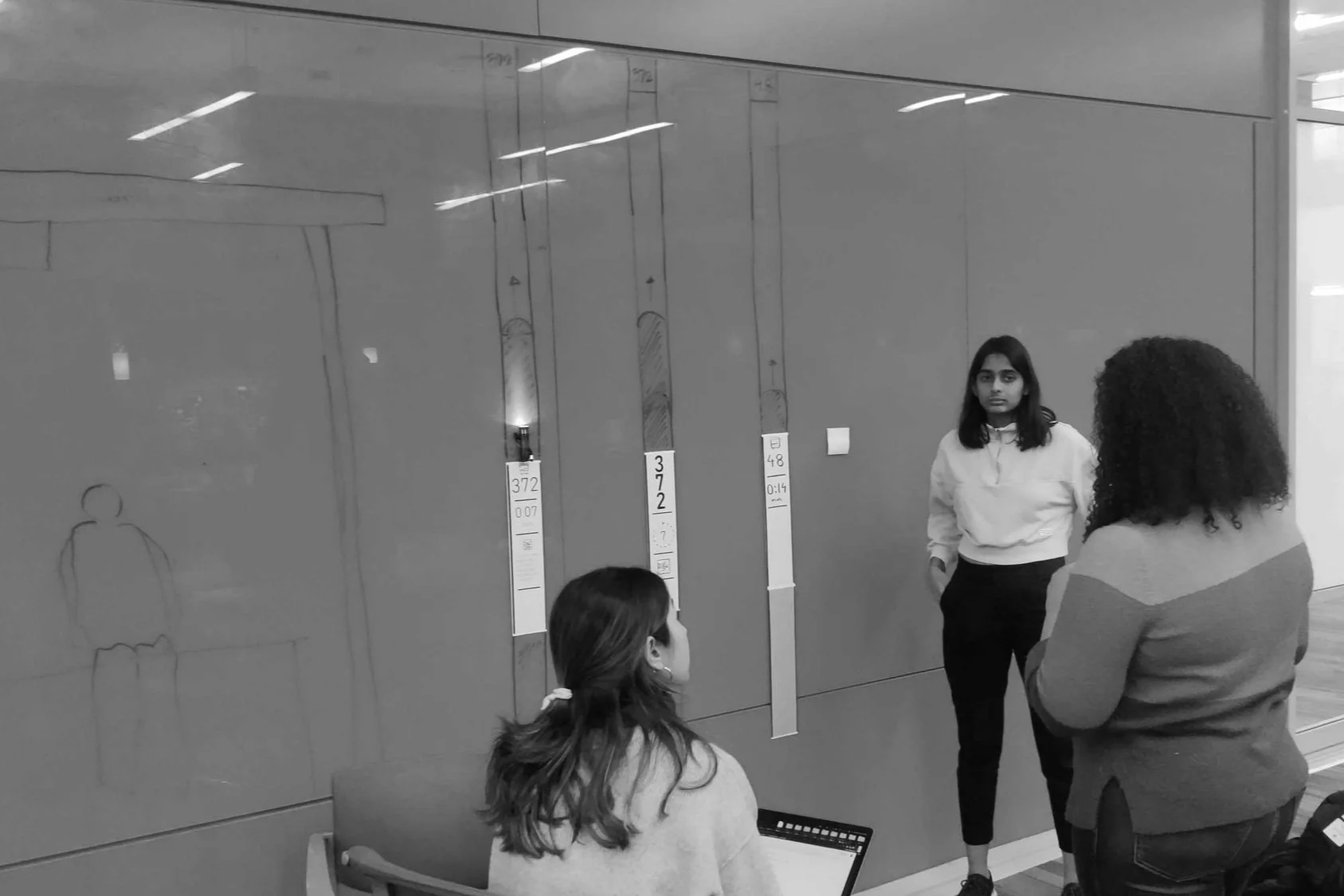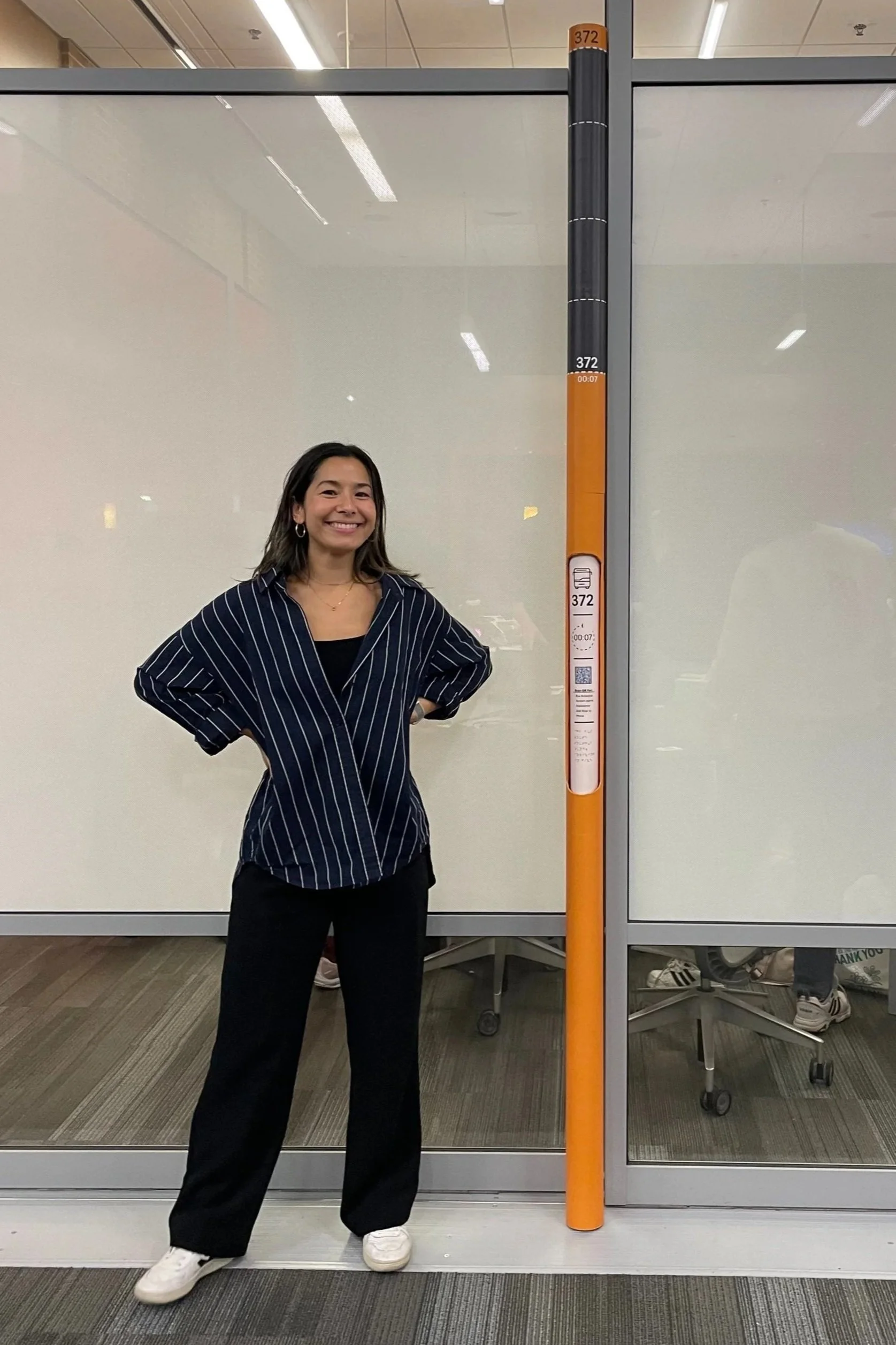The Bus Beacon
My Role
Product Management
Sketching & Prototyping
Survey & User Testing
About
Product Design
UW HCDE 4-Person Group Project
Fall 2023, 10 Weeks
TL;DR
The short version
Problem
30,000 UW metro bus commuters rely on fragmented and inaccurate sources for arrival information, which leads to frustration when commuting.
Solution
The Bus Beacon replaces traditional bus stop signage with a dynamic lighted pole that offers real-time information in accessible formats for all users.
Impact
Featured on the UW Human Centered Design & Engineering department’s website and invited to pitch the Bus Beacon to Sound Transit’s head of innovation.
Personally? This project solidified my decision to career pivot and stretched my design skills to new mediums.
Final Design Solution: The Bus Beacon
Full case study below
↓
Let’s start from the beginning…
The full story
The Problem
King County metro riders spend 1,199,548 days per year waiting for buses
43% of UW students, staff, and faculty commute to campus via public transit and spend 14-minutes on average waiting for the bus according to a study by Moovit
The Problem
Where are riders waiting?
The typical metro bus stops leave commuters without access to lighting, arrival information, or notification of route disruptions. All while standing on the side of busy, wet, Seattle streets.
The Problem
Existing route planning tools are unreliable
Currently, riders use various digital tools to route plan and track arrival times. However, these tools are wildly inconsistent and require internet, which creates barriers and uncertainty when commuting.
Problem Statement
30,000 UW metro bus commuters rely on fragmented and inaccurate sources for arrival information, which leads to wasted time, friction, and frustration while commuting.
Research Methods
With only five days for UX research, our team of 4 conducted an ethnographic study, semi-structured interviews, a 35-respondent survey, secondary research, and affinity mapping
Research Findings
Access &
Privacy
Users are uncomfortable providing location data into unfamiliar tech.
↓
Solution is accessible to users without smartphones and operate without personal location data.
Notification
Overload
Users are overwhelmed with texts, notifications, alarms, and emails.
↓
Solution allows users to pull information when they need it and does not contribute to push notification overload.
Delays &
Disruptions
Users want to know arrival times of next buses, notifications of major disruptions, and options when delays occur.
↓
Solution provides all arrival information, including appropriate error states for when delays occur.
Ideation
Design Solution
Designed to be intuitive, informative, and accessible, the Bus Beacon replaces traditional bus stop signage with a dynamic lighted pole that offers real-time arrival information.
Key Features
Passive solution at the stop
Dynamic lighting for visibility & safety
Error states for closures/delays
Simple arrival countdown
Accessibility-first design
Smartphone-free interaction
Accessibility-first design
Dynamic, multi-sensory arrival information delivered to all users, including people with disabilities, users without smartphones, and those with limited reading or English comprehension.
Audible chime before arrival
Simple, icon-based info
Visual countdown (HH:MM)
QR code & additional resources
Refreshable braille display
Information display located at ADA accessible height for people in wheelchairs.
Beyond delays
Beyond arrival information, the beacon displays route error states. If a line isn’t running, the bus stop closed, or a route diverted due to inclement weather, the beacon lets users know what to expect.
Upon resume in service, the beacon would return to the success state and resume loading to the top until the bus arrives.
Snow route
Stop closure
Digital Companions
Users want autonomy for how and when they receive arrival information. While Bus Beacon is a physical-first solution, users can access information remotely with corresponding digital tools.
The Bus Beacon widget displays route number, arrival time, and stop location, passively delivering arrival information without requiring secure location data.
Existing Stop
- Lacking real-time arrival info
- Unreliable digital companions
- Complex timetable data
- Static signage requires manual updates
- Dimly lit bus stops
Bus Beacon
+ Real-time arrival data
+ Operable without additional tech
+ Simple, icon-based information
+ Multi-sensory interaction
+ Push closure updates immediately
+ Integrated lighting
Project Impact
Since completion, the Bus Beacon has been featured on the University of Washington’s HCDE website and piqued the interest of Sound Transit’s department of innovation
Reflection
The Bus Beacon was my first end-to-end design project in UW’s HCDE Master’s program and it was a wild ride. The project started out studying the behavior of car commuters, and morphed through several rounds of problem redefinition and user feedback. Throughout this process, I saw firsthand how negative feedback on our initial push notification system—though tough to hear and initially caused mild panic—ultimately led to a more user-centered solution. I learned how to storyboard and animate digital sketches, conduct rapid prototyping and user research, and created a project I’m truly proud of.
If tomorrow Sound Transit decided to pursue the Bus Beacon, some next steps would be: 1. Validate our initial assumptions around technology feasibility 2. Test accessibility with diverse users with disabilities, and 3. Conduct discovery research on scalability, phasing, and digital integrations.

















